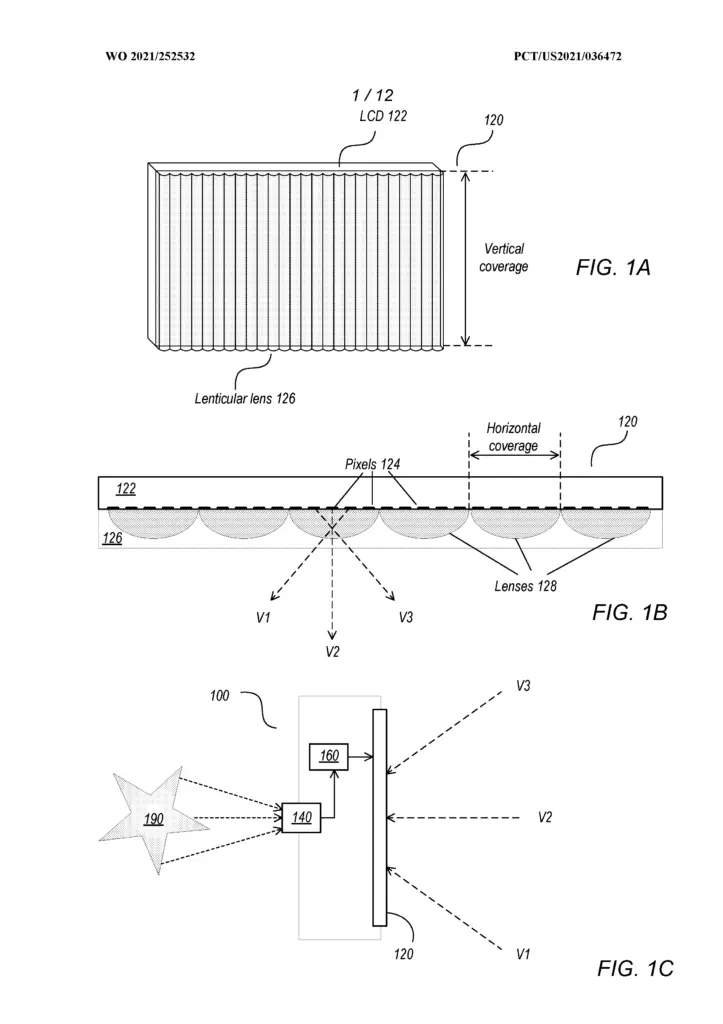The patent (WO2021252532) is titled “Lenticular Lens and Methods for Producing the Same.” It describes a lenticular lens and the methods used to produce it. Lenticular lenses are optical devices with an array of small, elongated lenses on one surface, which create different images or visual effects depending on the viewing angle.

The lenticular lens disclosed in this patent has a plurality of lenticules (small lens elements) arranged in a predetermined pattern on one surface, while the other surface is a substrate or flat base. The lenticules are designed to have a specific orientation, allowing them to create different images or visual effects depending on the angle from which they are viewed.
One aspect of this patent is the method of producing such a lenticular lens. It involves:
- Providing a mold with cavities shaped according to the desired lenticules, which may have various shapes, sizes, and orientations.
- Filling the cavities in the mold with a curable material, such as a polymer, that will form the lenticules after it’s cured.
- Curing the material to form the lenticules, which can be done using various techniques like UV radiation, heat, or chemical catalysts.
- Removing the cured lenticules from the mold cavities, and possibly treating or processing them further to achieve specific optical properties or effects.
- Attaching the lenticules to a substrate, which serves as a flat base for the lens, resulting in the final lenticular lens.
The potential use cases, as outlined in the document, are myriad. However, the patent uses the term head-mounted displays (HMDs) a lot. Most of the discussion is around various design aspects and production methods for creating lenticular lenses, which can be tailored specifically for use in HMDs. That would be the main reason that it has attracted some notice among the numerous social media accounts that follow Apple religiously.
“In various embodiments, the lenticular lenses described herein may be used in, for example, displays, signage, packaging materials, image sensors, optical filters, or other optical applications where the quality of the image or the user experience is improved by the presence of the lenticular lens.”
Apple Patent No. WO2021252532
Display Applications of Lenticular Lenses
Lenticular lenses have also been used in display devices to provide 3D and autostereoscopic experiences without the need for special glasses.Apple had previously received a patent for a lenticular display that tracked multiple users and what they saw, we covered the story back in 2021. In the meantime, are some examples of actual displays incorporating lenticular lenses:
- Autostereoscopic 3D displays: Lenticular lenses are used in autostereoscopic displays to provide a glasses-free 3D viewing experience. These displays use lenticular lenses to direct different images to each eye, creating a perception of depth. Examples include glasses-free 3D TVs and some 3D monitors.
- 3D lenticular digital signage: Digital signage displays with lenticular lenses provide an enhanced viewing experience with depth, motion, or morphing effects. These displays are often used in advertising, retail, and exhibition spaces.
- Mobile devices: Some smartphones and tablets have incorporated lenticular lens technology to provide glasses-free 3D experiences. An example is the Amazon Fire Phone, which used four front-facing cameras to track the user’s head position and adjust the lenticular display accordingly for a 3D effect.
- Gaming devices: Nintendo 3DS, a handheld gaming console, uses a lenticular lens to create a glasses-free 3D gaming experience. The device features a parallax barrier that works in conjunction with the lenticular lens to display different images to each eye, creating a 3D effect.
Apple has sufficient legal power and money to patent even the most trivial of applications or technologies. You cannot read anything into these patents other than the fact that the company obviously sees value in the technology and work it has done on it, and that it may be relevant in a broader context and as part of other work going on in the company.

